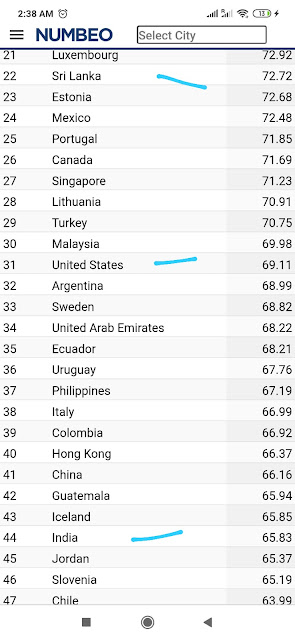https://www.numbeo.com/health-care/rankings_by_country.jsp
even with lesser cost, why better healthcare?
"It was recognized from the 1940s onwards that what was needed was a ‘health policy’ rather than a ‘disease policy’ as summed up by the director of the medical services Dr W. G. Wickremesinghe as early as 1945. Despite this ongoing acceptance of the benefits of preventive medicine the balance of government expenditure was overwhelmingly in favour of curative medicine as is the case in most other countries. One estimate of this balance in 1975 suggested that for every rupee spent on the curative sector only 12 cents was spent on prevention of disease and the promotion of health. This situation prompted the director of the Colombo Hospital to ask in 1970: “Was it more important to improve sanitation, nutrition, and health education and provide basic facilities for health and patient care for the masses of this country; or was it more important to go in for sophisticated and expensive programs like heart transplant units?” (Daily News, 3 Sept 1970). However, the hospitals were the visible symbol of Sri Lanka’s free health service and the symbol of modernity; switching resources to preventive public health was a highly politically contentious issue.
There were deep roots to the development of primary health care services in Sri Lanka and it represented at international level an example of what could be done without the levels of expenditure common in developed countries. Sri Lanka´s experience was an essential part of the debate on primary health care which took centre stage at international level in the 1970s. Furthermore, given the extent of its hospital based curative system it was also a perfect illustration of the limits of that model for low-income countries in the context of a burgeoning population and economic crisis. However, in the succeeding decades the challenge for Sri Lanka has remained that of finding the most effective route to reducing morbidity. This is now an ever more pressing priority with the demographic transition to an ageing population and the resulting double disease burden."
https://www.ncbi.nlm.nih.gov/books/NBK316260/
For India - Same scenario of double disease burden.






No comments:
Post a Comment